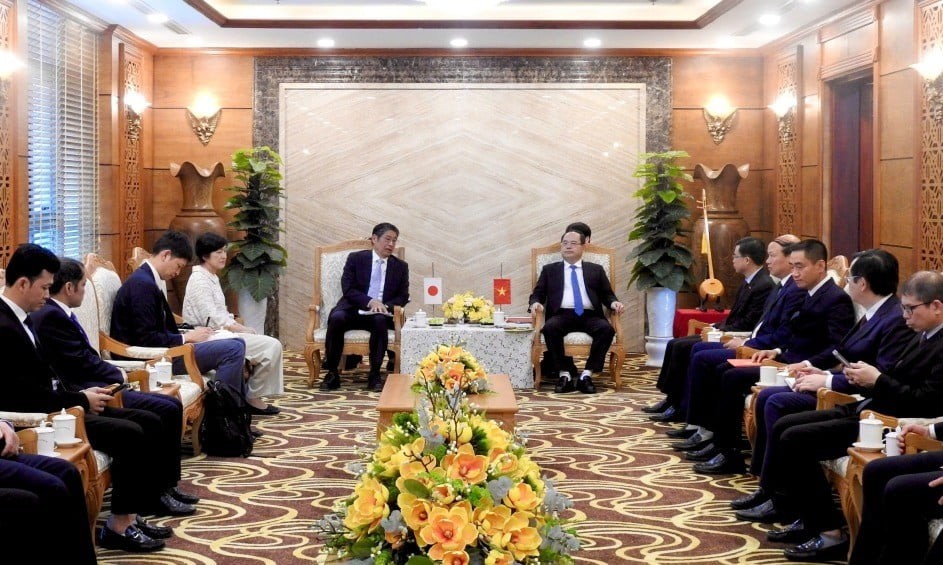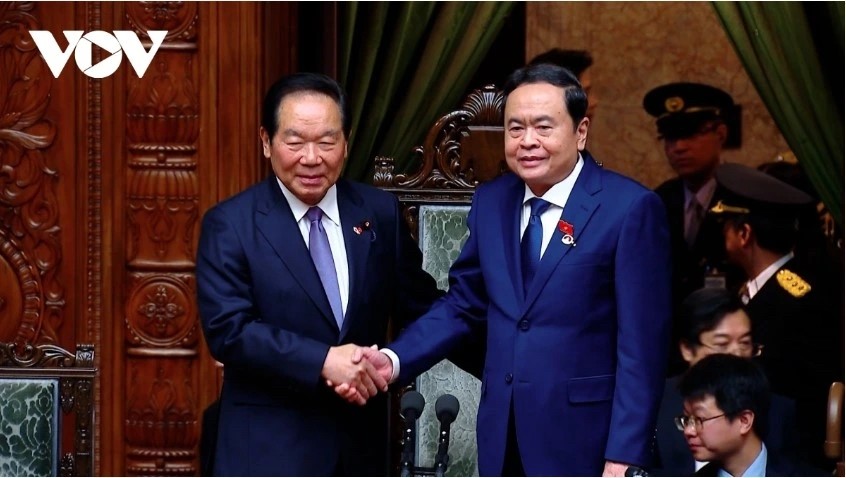Vietnam – One of Largest Rubber Suppliers to Japan
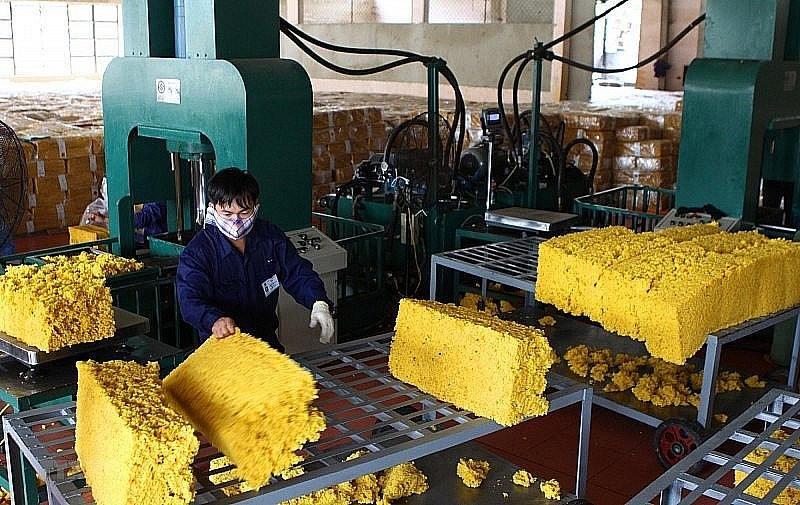 |
| Vietnam is among the largest rubber suppliers to Japan. Photo: congthuong.vn |
The agency cited statistics by the General Department of Customs showing Vietnamese rubber exports to Japan reached 5.470 tonnes worth $8.98 million in the first eight months of the year, down 10.4% in volume and down 27.6% in value year-on-year, according to VOV.
The average export price of rubber to this market stood at $1,565 per tonne, down 19.2% over the same period in 2022.
The country’s natural rubber is the primary product exported to the Far East nation. Of the various types, SVR CV60 accounted for the largest portion of total exported rubber at 39.89%, followed by SVR 3L at 36.68%, and SVR 10 at 13.22%, respectively.
The agency said since the beginning of the year, national rubber exports to the Japanese market have faced a number of difficulties, resulting in a fall in both quantity and value of exports to the market.
As the Covid-19 pandemic recedes, Vietnam's rubber industry faces challenges from both the world market and internal factors that hinder the industry’s competitiveness. Finicky global markets are extremely competitive and well down the road of development, meaning Vietnam needs to catch up to keep pace, VietnamPlus said.
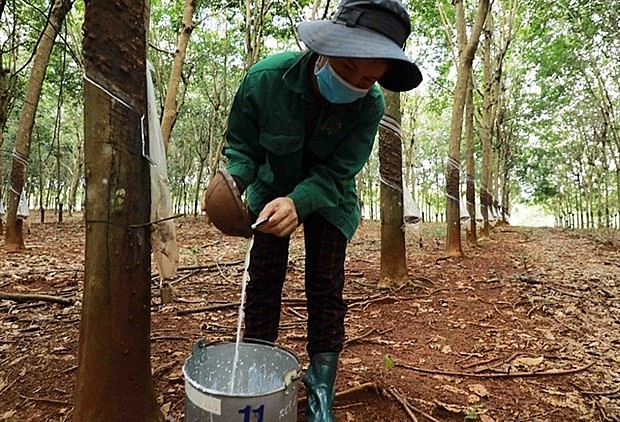 |
| A worker collects latex at a rubber plantation in Binh Phuoc province. Photo: VNA |
Tran Ngoc Thuan, Chairman of the Vietnam Rubber Association (VRA), said the competition between natural rubber-producing and exporting countries will become more intense in terms of price, product quality, commercial reputation, and the ability to meet increasingly stringent sustainability standards on demanding markets.
On the other hand, the structure and types of natural rubber in Vietnam still heavily rely on the Chinese market and only partially meet the needs of other, more finicky markets. This makes it difficult for market penetration in major markets such as the US, and Japan, among others.
In addition, a disjointed national management system and policy mechanisms such as tax declaration, value-added tax, and high-income taxation have caused difficulties for industry and business growth.
Meanwhile, according to the free trade agreements, natural rubber imported into Vietnam currently enjoys a tax rate of 0%, which will encourage businesses to prioritize choosing import markets from Thailand, Malaysia, and Indonesia. This will create competitive pressure on domestic rubber businesses.
The rubber product processing industry still faces difficulties in competing with imported products. There is still a lack of technical barriers in trade to prevent poor-quality goods from being imported from other countries, causing losses to consumers and unfair competition with domestic goods.
Despite many difficulties and challenges, the VRA leaders said that the industry will also have many advantages in the coming time.
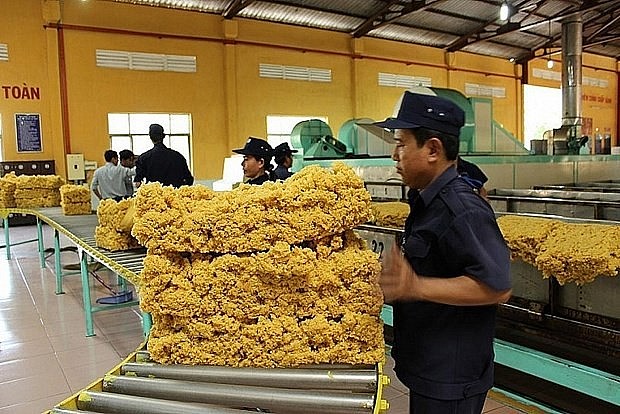 |
| The rubber industry is expected to see many advantages in the coming time. Photo: congthuong.vn |
The association forecast that the world's natural rubber demand will be in a continuous uptrend. The gap between supply and demand will be a great opportunity for Vietnam to increase natural rubber production, and export turnover, and create jobs for rural areas and related industries.
Tran Thanh Nam, Deputy Minister of Agriculture and Rural Development, said that in general, there are still many difficulties and challenges, the association needs to continue promoting its representative role while considering supporting members and businesses as an important factor contributing to promoting sustainable development of the industry in the coming time.
According to the official, sustainable development has become stronger and Vietnam's rubber industry must focus on improving competitiveness in the world market on the basis of quality assurance in accordance with international standards.
Vietnam's rubber industry requires uniform quality management nationwide while increasing the application of advanced techniques, restructuring products according to market requirements, and expanding investment in processing. The formation of auxiliary industries is important, and at the same time, the sector must continue to promote the reorganization of the industry according to the production value chain in order to improve competitiveness in the international market.
 | The Captivating Beauty of the Rubber Forest in Ha Tinh In the spring, the leaves of the vast rubber forest in the mountainous district of Huong Khe (Ha Tinh) turn red and yellow. This color ... |
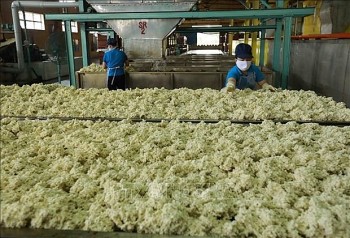 | German Rubber Firms Want to Expand Cooperation in Vietnam Many German rubber firms wish to expand business cooperation in Vietnam. |
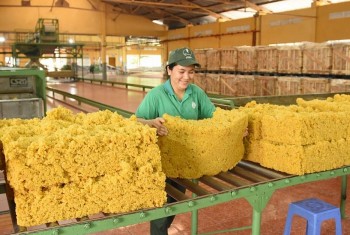 | Netherlands increases rubber imports from Vietnamese market Local rubber exports to the Netherlands during the first quarter of the year reached 3,030 tonnes, worth US$4.38 million, representing a rise of 31.2% in ... |
Recommended
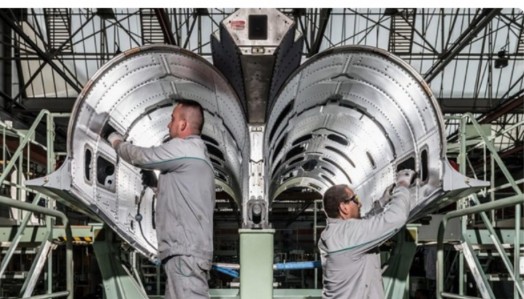 Economy
Economy




